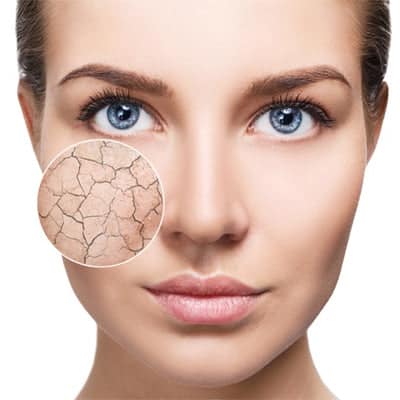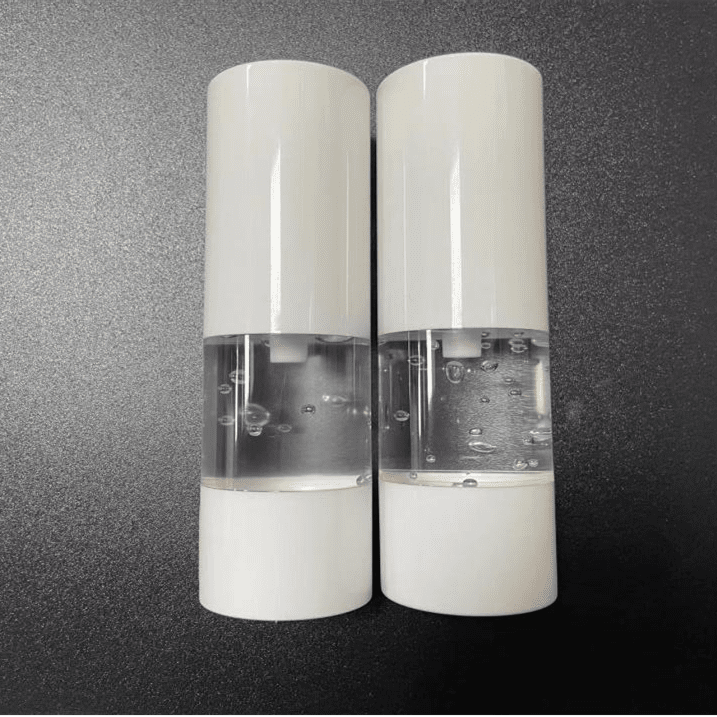Face primer is the foremost step to start your makeup, but some of us overlook it and skip it. Those who know it’s worth religiously follow this step. It provides the perfect makeup look, but unfortunately, it balls up on your face. How desperate it is!
You are done with your makeup and end up with skin pilling. Are the problem lies in the product itself? Let’s find out how this happened, and we will know the solutions here.
Skin Factor
Have you ever noticed that your products, like moisturizers and serums, are not soaking well into the skin? Instead, the product is transferring back onto your fingers because as you rub the product, there must be tiny balls or particles start forming on the skin. It doesn’t seem right and needs to be fixed.
There might be a reason that your skin can be of the following types:
Dry Skin
If your skin is dry for a long time, there will be a lot of dead skin cells in the stratum corneum. This outer layer protects the skin from excessive water loss. Therefore when the cells divide and advance to the epidermis, they will dry up and die in the middle of lack of water and cannot peel off naturally. Due to this drying process, oil products like lotions and creams don’t readily absorb the skin. During the application process, the cream wraps old and dead keratinocytes, and the phenomenon of rubbing mud occurs. The dry patches and too many dead skin cells won’t allow your flawless makeup look. Dry, rough, and uneven skin enables the makeup to pill.

Poor Skin Absorption
When the skin is dry, the microcirculation absorption and metabolism function is weakened. If the skin is allergic, the absorption function is weakened. Skin care products cannot be fully absorbed, accumulating on the skin’s surface and causing rubbing.
As you apply moisturizers and serum to your skin, they sit on top of your skin and do not absorb at all sometimes. This poor absorption causes skin pilling.
Thick Stratum Corneum
The skin is renewed every 28 days, new cells grow in the bottom layer, and the old cells are pushed to the outermost layer by layer to form an aging stratum corneum. The skin’s surface cannot absorb products then, creating rubbing mud onto your skin.
Simply put, the skin produces too many old waste cells, and routine cleansing can no longer meet the skin’s needs. Therefore, exfoliating products are more needed to clean the old dead skin cells on the skin’s surface to prevent the ball up.
Product Factor
Dehydration of Molecular Components into Film
The smaller the product’s molecular structure, the easier it is to be absorbed by the skin. Similarly, it is harder for the skin to absorb the product with a large molecular structure. Thus, the ingredients containing high molecular polymers are easy to rub.
Taking hyaluronic acid as an example, this polymer compound can well capture water molecules and polyols to achieve the effect of hydrating. But when hyaluronic acid loses water and dries, it will form a film on the skin, forming some dandruff after rubbing it.
Thickener Produces Flocculation Sediment
The main reason for the product pilling is the “thickener” in the product. Its primary function is to moisturize and thicken. The usual proportion of thickener will result in pilling, and it will stay on our face until a facial cleanser washes it off. However, suppose there are too many thickeners or macromolecules in the formula of this product. In that case, it will easily cause the phenomenon of peeling off.
Carbomer is a common thickener in cosmetics. An anionic polymer can produce an insoluble precipitate when the divalent ion content is sufficient. In addition, the most common reason for mud rubbing is that when carbomer and cationic surfactant meet, due to pH changes, they will flocculate and precipitate due to incompatibility.
High Content or Low-Quality Silicone Elastomer
Silicone elastomers are usually based on linear polysiloxanes, plus cross-linking agents and other compounding agents, and are formed by mixing and vulcanization. Polysiloxane is a polymer with a repeating Si-O chain as the main chain. The organic group is directly connected to the silicon atom. It’s often added to products like foundations, creams, and hair treatments, making it slippery and dry on the face for a better skin feel. The higher the product content, the more considerable the amount used, and the easier it is to rub the mud. The most common is polydimethylsiloxane and cyclopolydimethylsiloxane, etc.
The heaviest silicone is dimethicone which is abundantly present in many cosmetics. Our primers are silicone made that need to be applied in a small amount. Still, many of us unknowingly use too much of the product, which results in makeup pilling.

(Left: cheap silicone elastomer, right: high-quality silicone elastomer)
In addition, choose a product with high-quality silicone elastomer to avoid pilling.
The Sunscreen Itself Results in Pilling
You must be wondering how sunscreen can cause skin pilling. Well, sunscreen forms a protective film during the application process. Before the film is formed, if you apply BB cream and foundation in a hurry, it might get failed to set on your skin. Sunscreen usually contains titanium dioxide aqueous solution, which is not the same as oil. Therefore, it can quickly form “mud” or white chips.
Some sunscreens, especially chemical sunscreens, will add some polymer glue to take care of the feeling of use, which will also cause the phenomenon of rubbing mud.
The Product Is Not Compatible
① Thickener polymer (carbomer, xanthan gum, hyaluronic acid, etc.) + powder (silicon dioxide, titanium dioxide, silicon powder, aluminum hydroxide, zinc oxide, etc.)
② There are too many polymer substances and thickeners in the gel or essence, which flocculate with metal ions such as titanium dioxide and zinc oxide in foundation or sunscreen lotion, resulting in “mud.”
③ Products that contain too much silicone oil (such as Cyclopentasiloxane, polydimethylsiloxane cross-linked polymer, etc.) have an excellent slippery feel, but they tend to be rich in oil and grease. This combination is incompatible if you use an oil-based primer and water-based foundation. And likewise for water-based primer and oil-based foundation. It is like mixing water with vinegar, they tend to mix on the spot, but over time they separate. Such products are not compatible, and they result in mud or pilling.
④ Products containing fruit, salicylic acid, etc., and products with zinc oxide ingredients, such as isolation milk, are also prone to “mud.”
Solutions
You can avoid face primer or face pilling by adding these steps to your skincare regime to make your skin look flawless with and without makeup. All you need to do is to:
- Exfoliate regularly: Exfoliating the skin twice a week is enough. You can use scrub and face polish to make your skin feel light and alive, but remember, be gentle while using them.
- Apply water-based products before oil-based skincare
- Apply less to your skin and take your time. Go easy with the amount you are going to apply to your skin. Remember, less is more in makeup.
- Pat and press: Give your skin a few moments before it fully absorbs, and apply the second product.
- You need to nourish your skin if you tend to have dry skin. Your skin needs preparation before applying makeup, so hydrate it gently. Also, adopt a healthy diet and lifestyle to relax your body with happy hormones and keep your skin fresh and vibrant.
- Look at the ingredients before buying. You need to check components that are poor at absorbing well, like talc, mica, iron oxide, and silicon. Using these two ingredients in one product is fine, but we don’t want to layer them on our skins for the long term.
- Keep silicone products to a minimum. Makeup products keep various silicones, but makeup experts suggest that you need to avoid such ingredients as dimethicone, amodimethicone, and Cyclomethicone.
- Apply Face Primer Correctly

If your skincare process is perfect without any problem, then apply primer to start your makeup look. You must be very relaxed and excited after knowing the tips and tricks to avoid skin or face primer pilling onto the skin. Now it’s time to start doing your makeup. We will further guide you on the correct way to apply face primer and more tips to make your skin look more beautiful.
Avoid these three steps that may ruin your foundation:
Apply Too Much
Applying too much face primer can slide down all your foundation because face primer is used to cover the pores, so applying too much can ruin all your makeup look. Pea-sized primer is enough to start your makeup. Use it on your t-zone area.
Balancing the amount of product can save you from pilling. If your foundation layers heavily at the top of primer, moisturizer, and concealer, it is sure that your makeup will pill. It is up to your skin because every skin is different, and you need to be wiser about it.
Apply All Over the Face
The role of the makeup primer is to modify the pores and make the foundation more docile. It only needs to be used on the skin imperfections such as cheeks, forehead, nose, chin, etc. It does not need to be applied all over the face; therefore, using face primer to your t-zone area is better.
Apply Foundation Immediately After Primer
Every step in makeup counts towards makeup perfection. So, you need to wait 5 minutes for the primer to set after its application. Apply the primer to the center of your face and gently use circular motions to blend it outwards. The movement should be similar to the one you use when applying your moisturizer. Work the product evenly into your skin to get smooth, even coverage.
Also, some products contain too much silicone. You must avoid such products because the foundation lays on the skin and doesn’t absorb well. And even if you try to layer more products on silicone-based products, it will result in pilling.
Correct Your Makeup Pilling Instantly
Once the makeup pilling is built, you can undo the effect by following these steps:
Step #1: Make your makeup sponge wet
Step #2: Dab onto the area where makeup pilling is caused. But don’t rub the sponge. Just dab it gently.
Step #3: Now, apply translucent powder to balance the makeup. Apply a thin layer
Step #4: Let the powder set for about 10 minutes, and don’t apply anything during this period.
This will help refresh your makeup and prevent makeup pilling.
Every makeup undergoes testing and trial sessions before it hits the market. Still, it is the user’s responsibility now to know about their skin, buy the right product and avoid those ingredients that cause allergic reactions. Also, apply the product carefully and with the stated directions and amount. Apply the effects in the proper order, like serums, moisturizers, and sunscreen, in your daily skincare routine. And always be patient to give time to set an applied layer on the skin and then use the next one. Let the product absorb well. Follow these easy steps and enjoy your daily skincare and makeup routine. Happy layering!

